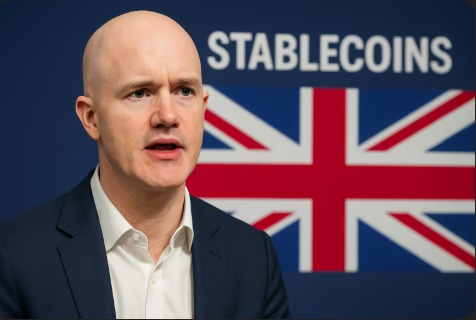The Bank of England will propose limiting individual stablecoin holdings to £20,000 and corporate holdings to £10 million in a consultation launching November 10, aiming to prevent rapid deposit outflows from traditional banks as digital currencies gain adoption.
The UK stablecoin regulation consultation comes as global regulators—from the United States to Europe—intensify their focus on crypto-backed digital money. For the UK, this initiative signals more than just compliance; it’s a strategic move to cement London’s role as a global hub for fintech and digital assets.
Bank of England Pushes for Stability in a Digital Era
According to a November 5 Bloomberg report, the Bank of England will release its detailed stablecoin regulation consultation on November 10, underscoring its intent to keep pace with rapid global changes in crypto policy.
Deputy Governor Sarah Breeden highlighted the urgency of these efforts, stating that the UK’s rules will arrive “just as quickly as those in the U.S.” She added that the framework will initially focus on stablecoins used for payments, ensuring they meet the same resilience standards as traditional banking instruments.
Breeden emphasized that the UK stablecoin regulation consultation aims to “balance innovation with financial safety,” a stance that reflects the regulator’s cautious yet progressive approach.
“The UK cannot afford to lag behind in shaping the rules that will define the next era of money,” she noted.
Proposed Limits to Prevent Market Disruptions
Under the new framework proposed in the UK stablecoin regulation consultation, individuals and businesses could face temporary holding limits. Reports suggest the caps may stand at £20,000 for individuals and £10 million for corporations.
According to Bloomberg, these measures are designed to prevent abrupt withdrawals of deposits from traditional banks into stablecoins—a risk particularly sensitive in the UK due to the heavy reliance of mortgage funding on bank deposits.
A Treasury official familiar with the plans said, “We want to ensure that stablecoin adoption happens safely and in stages. These limits will act as guardrails, not barriers.”
The UK stablecoin regulation consultation is also about alignment. By moving now, British regulators hope to keep pace with the U.S. Treasury, the European Union’s Markets in Crypto-Assets (MiCA) Regulation, and Hong Kong’s licensing framework.
The Financial Conduct Authority has already taken steps in this direction, allowing crypto exchange-traded notes (ETNs) to return to the retail market. In parallel, the UK Treasury is drafting a broader crypto rulebook expected to cover exchanges, stablecoin issuers, and staking services by 2026.
“This consultation is a signal that the UK is serious about becoming a leader in digital asset regulation,” said Emma Reynolds, Managing Director of Public Affairs at TheCityUK. “Businesses are watching closely to see whether this creates the clarity they need to innovate.”
Driving Innovation Through Responsible Oversight
Beyond risk management, the UK stablecoin regulation consultation is part of a broader national strategy to embrace tokenized finance. The government has repeatedly stated that blockchain-based innovations will play a key role in London’s next generation of financial services.
Industry experts believe that a well-calibrated regulatory framework could attract stablecoin issuers, payment providers, and fintech startups seeking a predictable operating environment.
“The UK has a chance to set the gold standard for stablecoin regulation,” said Dr. Iain Wilson, a crypto policy advisor at King’s College London. “If the rules are smart and proportionate, we’ll see more firms base their digital payment systems here rather than abroad.”
As the UK stablecoin regulation consultation unfolds, policymakers are expected to gather feedback from banks, fintech firms, and digital asset experts. The decisions made in this process could influence where tokenized assets and payment technologies thrive over the next decade.
With financial stability, consumer protection, and innovation all on the line, November 10 could mark the beginning of a new chapter for Britain’s digital economy.











